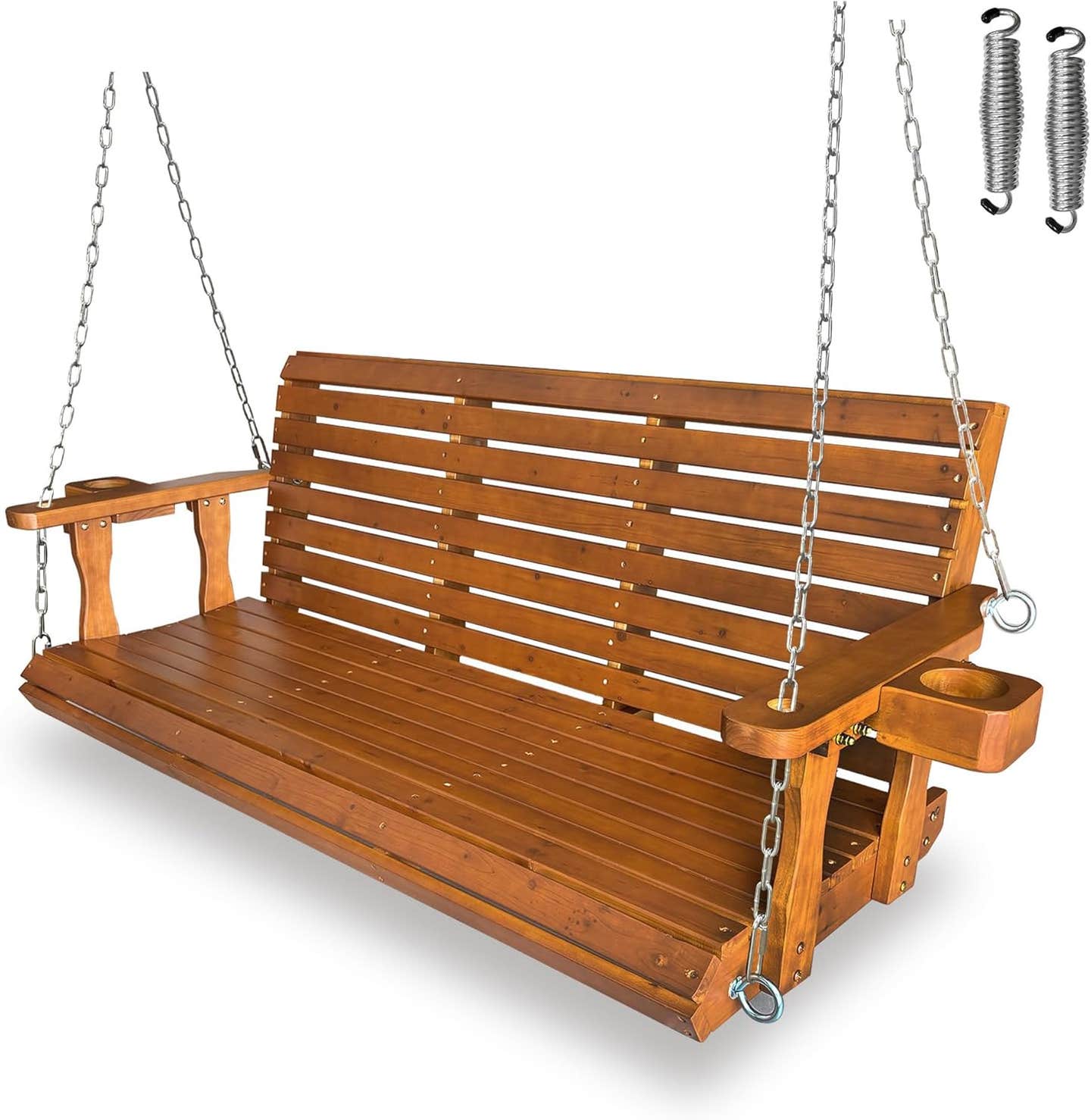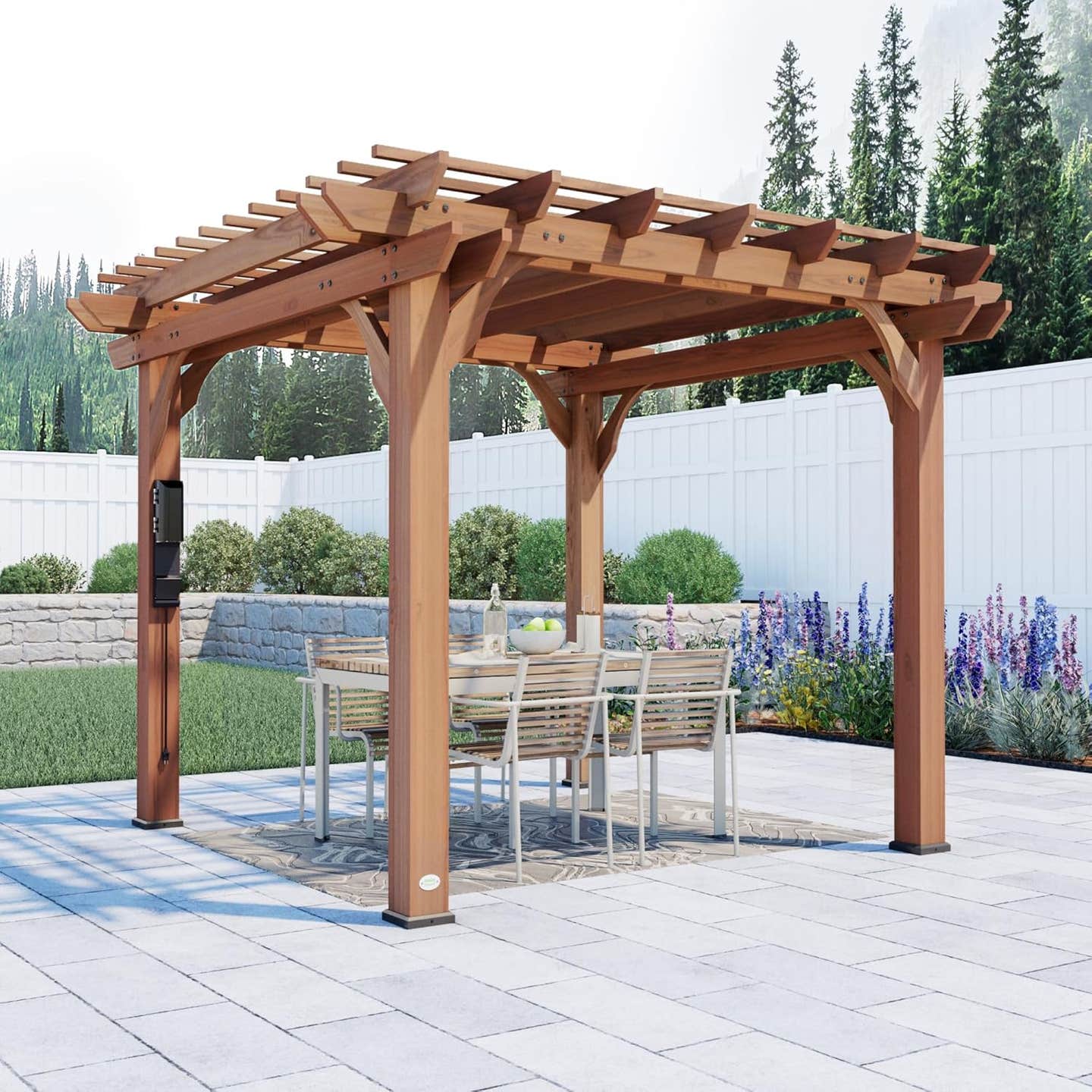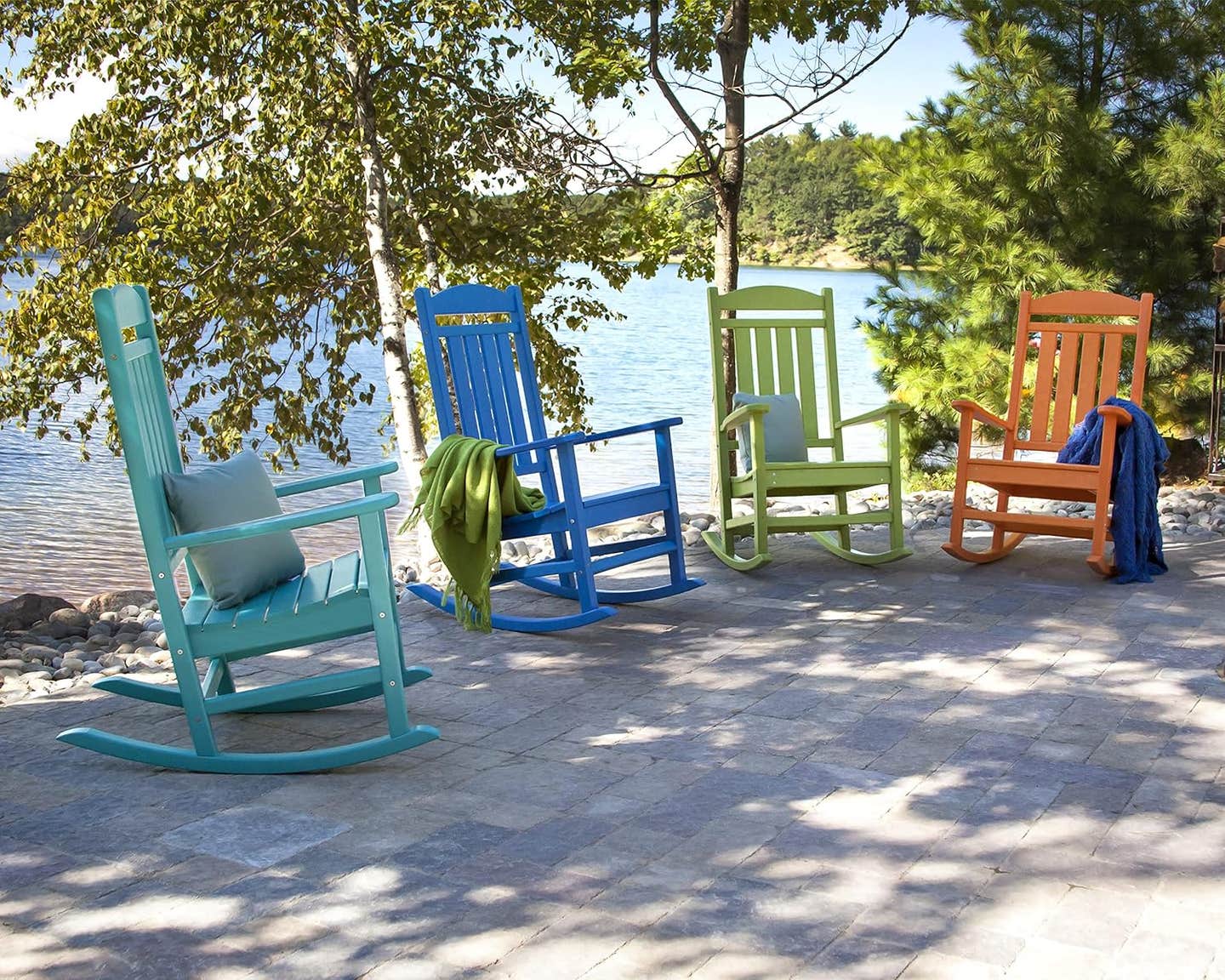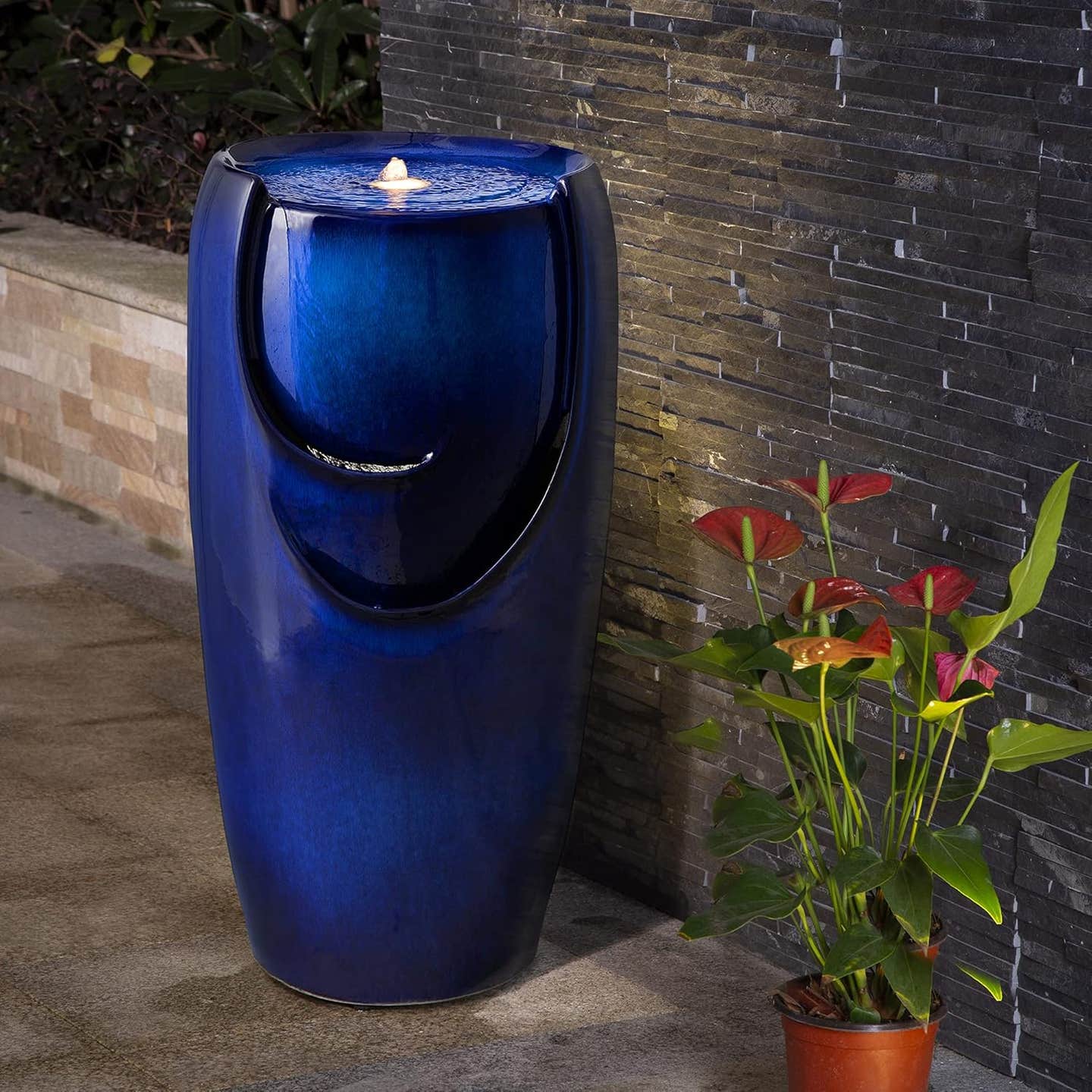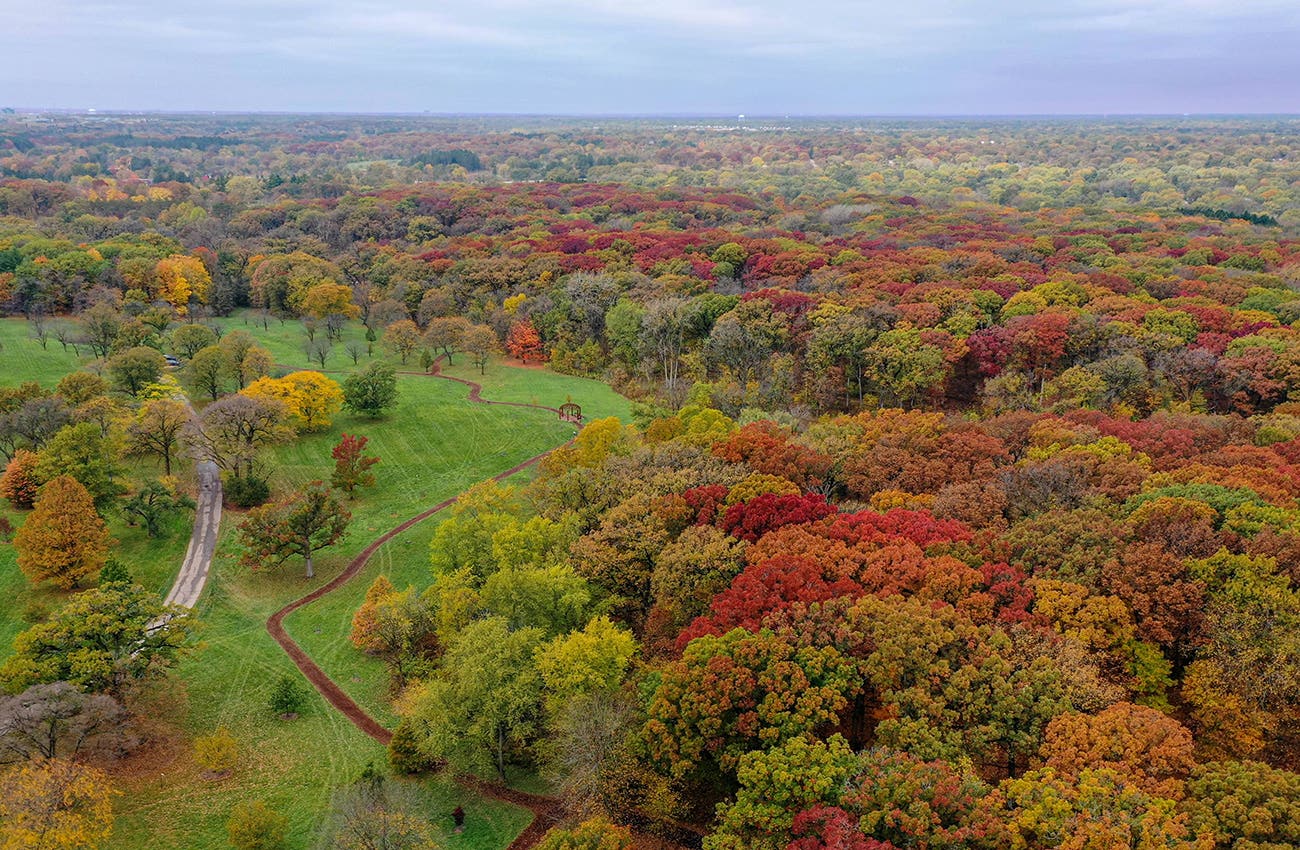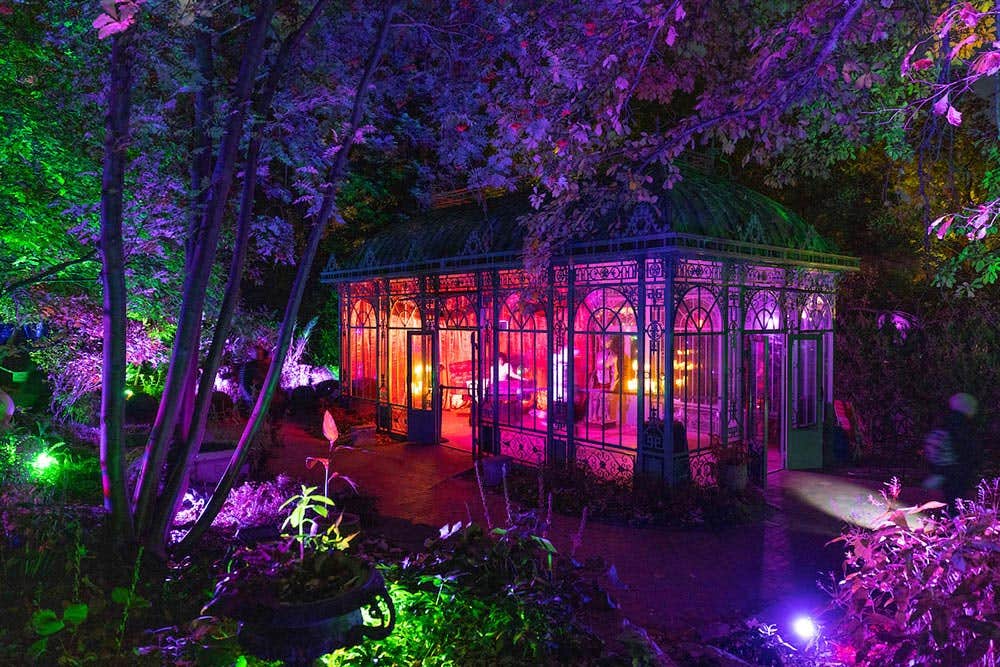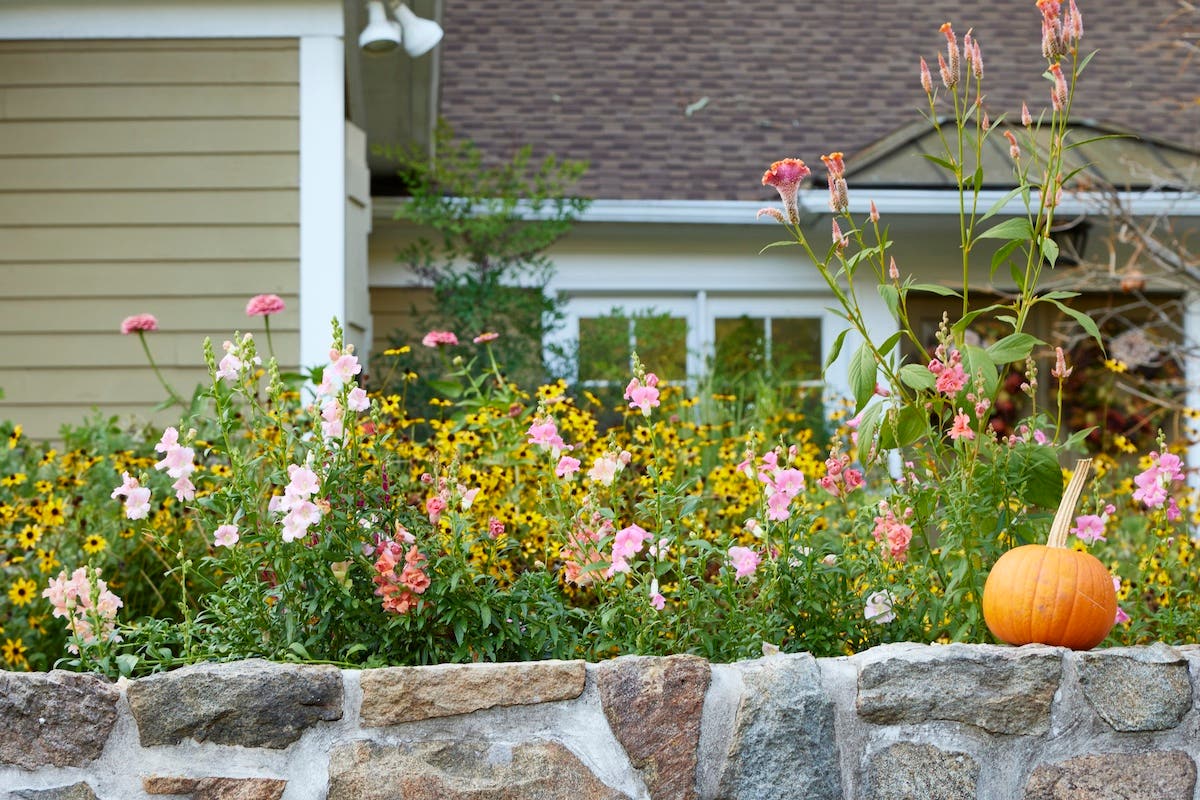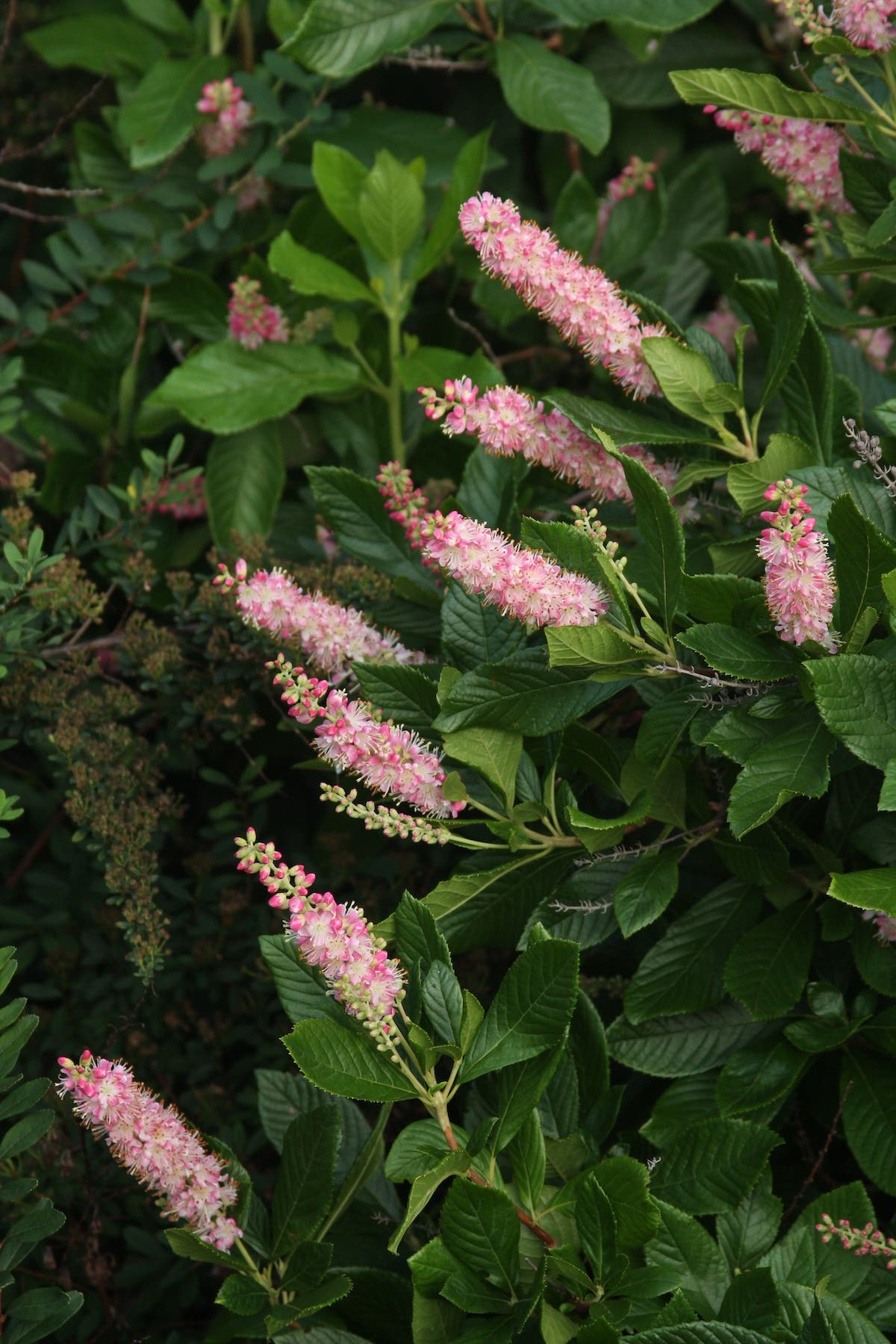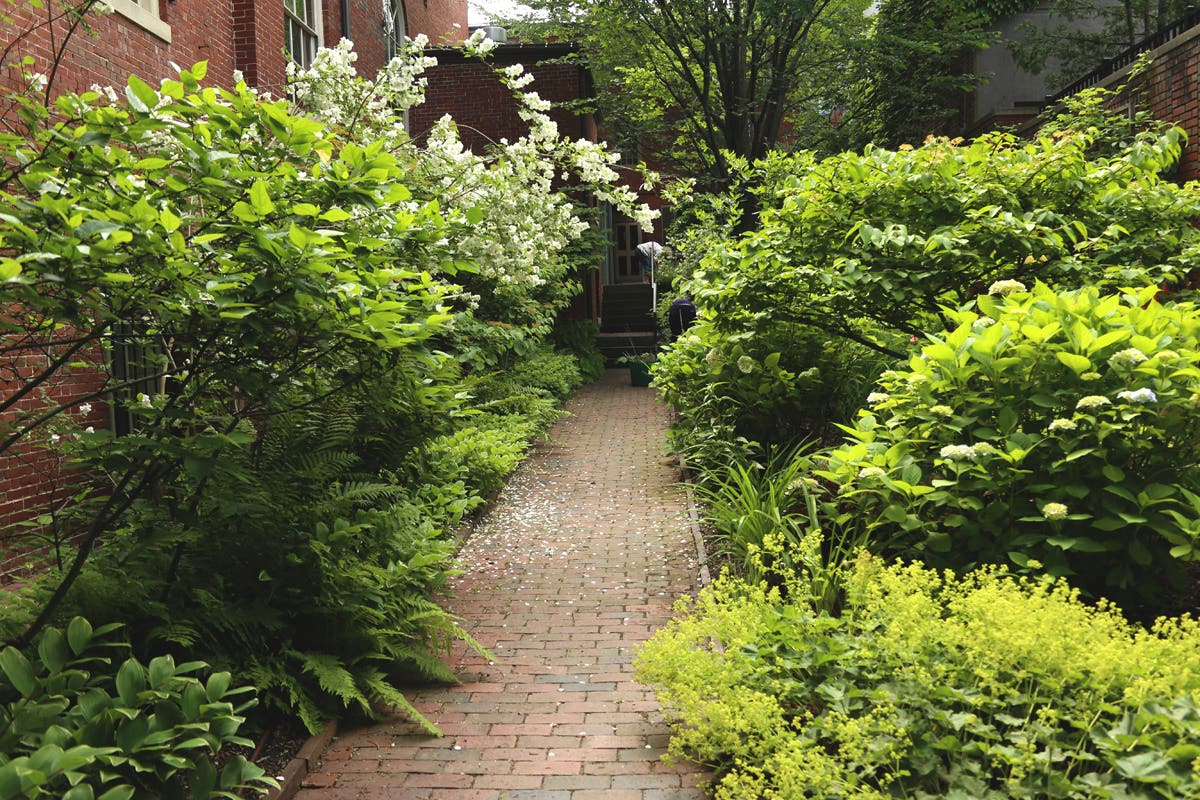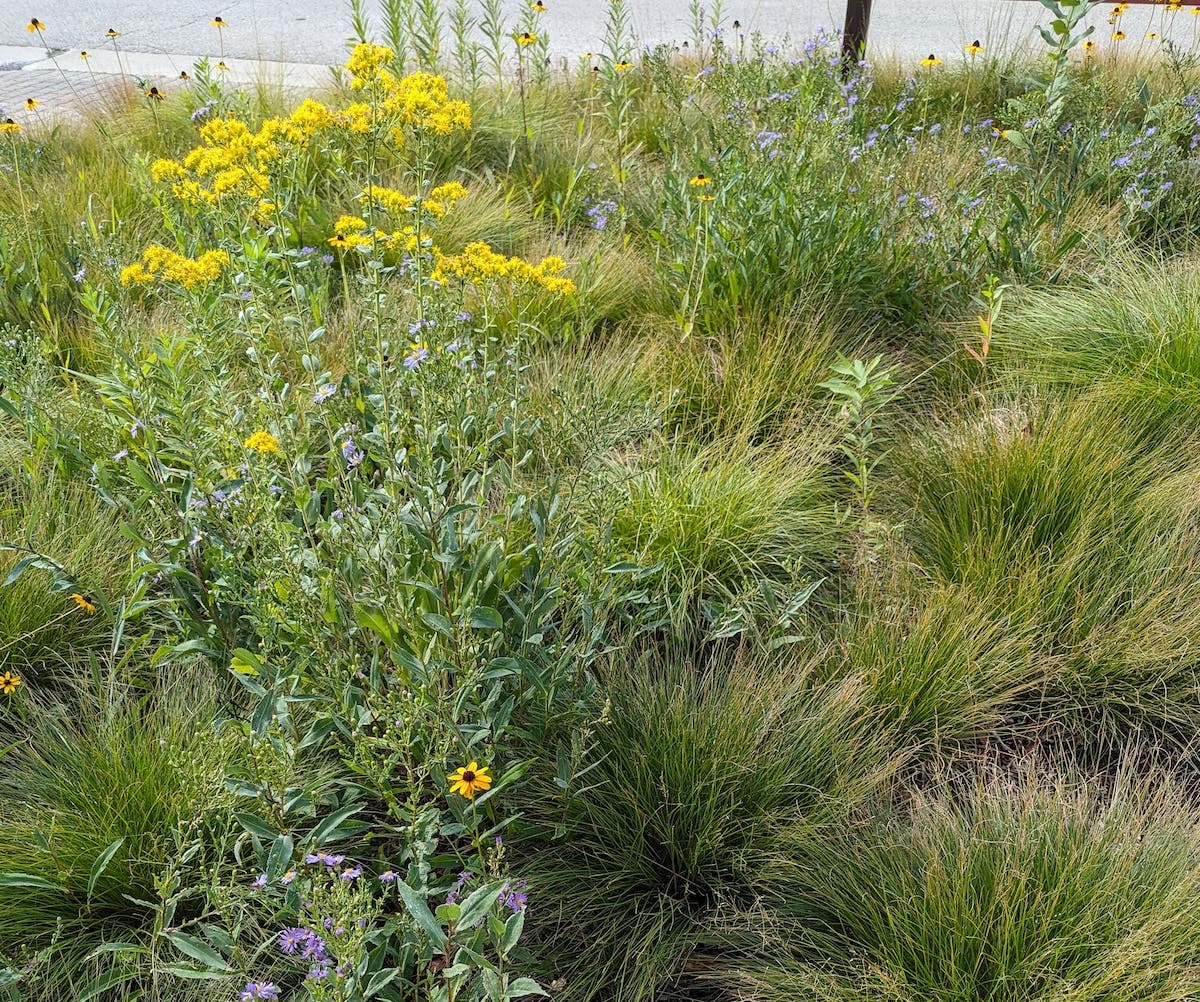How to Design a Meditation Garden
Here are the key elements and plants to include when designing a garden for meditation or quiet contemplation.
Meditation, the ancient practice of gaining clarity through mindfulness, is quickly taking root in popular culture. There are apps that remind us to breath, yoga poses to connect mind and body and podcasts to help center our thoughts. Though there are myriad ways to find focus, any nature lover can attest that the simple act of stepping outdoors releases us from our daily trappings and provides a wide-open venue for heightened awareness. Gardens are intrinsically linked to peacefulness and reflection, though they are teeming with life. Perhaps a garden’s dichotomy, how it exists between calm and vitality, invites us to quiet an unruly mind.
Meditation gardens are intimate spaces created for unwinding and reflecting, away from the noise and clutter of daily routines. Because meditation is a deeply personal experience, designing an ideal space for relaxation might begin with envisioning the natural surroundings that you find most appealing. Floral scent, running water, moss-covered stones, textured foliage and birdsong may all play roles. Gardens of all shapes and sizes are easily transformed into places of personal respite. As with any garden plan, available space, budget and sunlight will influence choices.
It may help to step outside at different times of day and spend time in the space intended for the meditation garden. Note the amount of natural light the garden receives, and think about when you’re most likely to spend time in the garden. Do you enjoy early morning light or afternoon warmth? Maybe deep shade and the earthy scent of the forest floor transport you to a calmer place. A shady summer retreat may transition to a more exposed and cooler space when leaves fall.
Key details
While there is a great deal of flexibility in designing a meditation garden, concentrating on a few key elements will help focus the design and related budget.
Seating is a key factor. Even in a small space, an inviting bench, unique rocking chair or simple stone seat invites visitors to rest and relax. Some degree of privacy is also important. A strategically located pergola, hedge or fence helps define boundaries. Draw a simple sketch of the area, arranging seating and privacy structures to capture the most compelling sunlight and line of sight.
A focal point like a statue, boulder or water feature encourages mindfulness. In a meditation garden, design elements represent larger natural forces. For example, a boulder may represent a mountain, while a lantern may guide the observer to illuminated thought. Water is often central to meditative space. It evokes calm, gives life and lends soothing sound. A regenerating fountain, waterfall or bubbling birdbath also helps mask noisy distractions. The water feature need not be elaborate. Even a decorative bowl of water, surrounded by colorful blooms or cool, shade-loving foliage, will reflect light and attract delightful interlopers.
A strategically located tree with colorful foliage, interesting branch structure or scented blooms adds vertical interest, and also serves as a wonderful focal point. Locate a specimen tree overlooking a pond or beside a bench at the end of a winding path. A specimen tree should complement the design motif, but also adapt suitably to the surrounding environment. Using plants that are well adapted to the soil and climate zone will ease garden maintenance. For example, in northern regions, pairing birch, spruce or maple with whimsical wooden statuary creates a seamless transition to the natural landscape. In southwestern climates, desert willow (Chilopsis linearis; Zones 7–9) offers shade as well as long-lasting, delicately scented pink blossoms. Accented with cacti and xeriscaped paths, a desert garden is a calm oasis.
Asian specimen trees are popular choices for a more traditional design. Many transition beautifully throughout the year. Yoshino cherry (Prunus xyedoensis; Zones 5–8), with its abundant, short-lived blooms, is a renowned symbol of renewal. This iconic beauty ages gracefully, with gnarled, arching branches. Chinese lantern tree (Koelreuteria bipinnata; Zones 7–9) heralds summer with bright yellow flower stalks, but its unique, salmon-hued seedpods steal the show when blooms fade. The papery, lantern-shaped capsules from which the tree gets its name persist into fall and sometimes winter. Japanese maples (Acer palmatum) are classic, though ubiquitous in some parts of the country. The cultivar Coral Bark (‘Sango Kaku’; Zones 5–8) is a favorite of mine. Pale green leaves edged in red emerge in spring and turn vivid gold in fall. Coral Bark breathes life into a part-shade garden, sheltering birds and other wildlife. When leaves fall, brilliant red branches illuminate the winter landscape.
Movement and privacy
In a meditation garden, visual flow invites relaxation. Pairing vertical focal points with horizontal elements provides balance and encourages natural movement. A winding path comprised of fine gravel, woodchips or pine needles subtly guides visitors toward a seating area or space for quiet contemplation. Grasses of various shapes and sizes, placed strategically along the path, enhance movement and add texture.
If the ideal location for a meditation garden abuts a noisy sidewalk or property line, consider a partial enclosure. A linked fence or pergola planted with Southeast-native trumpet honeysuckle (Lonicera sempervirens; Zones 4–9) invites hummingbirds and butterflies while partially obscuring the area from view. American wisteria (Wisteria frutescens; Zones 5–9) is another great climber, with lavender flower clusters in spring. Hops, grapevines and climbing roses are adaptable in a wide range of climates, each with their own appeal.
For more complete privacy, as well as winter interest, boxwood or American arborvitae (Thuja occidenatlis; Zones 3–7) hedges frame a quiet enclave. Berry-producing evergreens, including holly and cedar, will also shelter and feed wildlife. In cooler climates, interspersing variously sized evergreens adds lasting winter interest. Dwarf Hinoki cypress (Chamaecyparis obtusa ‘Nana Gracilis’; Zones 4–8) is a uniquely lovely, mid-sized specimen with deep green fanning foliage. Meanwhile, dwarf mugo pines (Pinus mugo ‘Sherwood Compact’ and ‘Slowmound’; Zones 2–8) fit neatly beside boulders. Creeping juniper (Juniperus horizontalis; Zones 3–9) is a hearty North American evergreen groundcover that shelters wildlife. Plant it along a stone path or around the edge of a pond for evergreen impact.
Simplicity is key in a meditation garden. A few significant features that awaken senses or impart particular meaning will inspire more calm than a clutter of elements. The process of designing and installing a meditation garden can be as rewarding as the end result. Take time to explore peaceful places, flip through magazines and websites and note quiet moments. The journey brings the garden to fruition.


